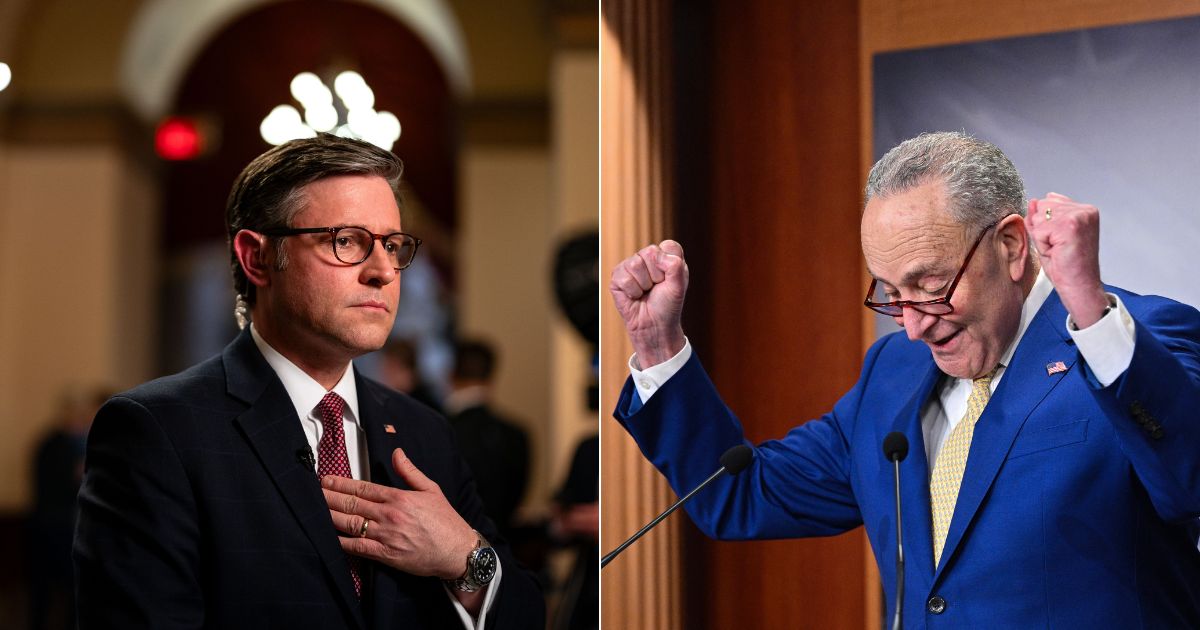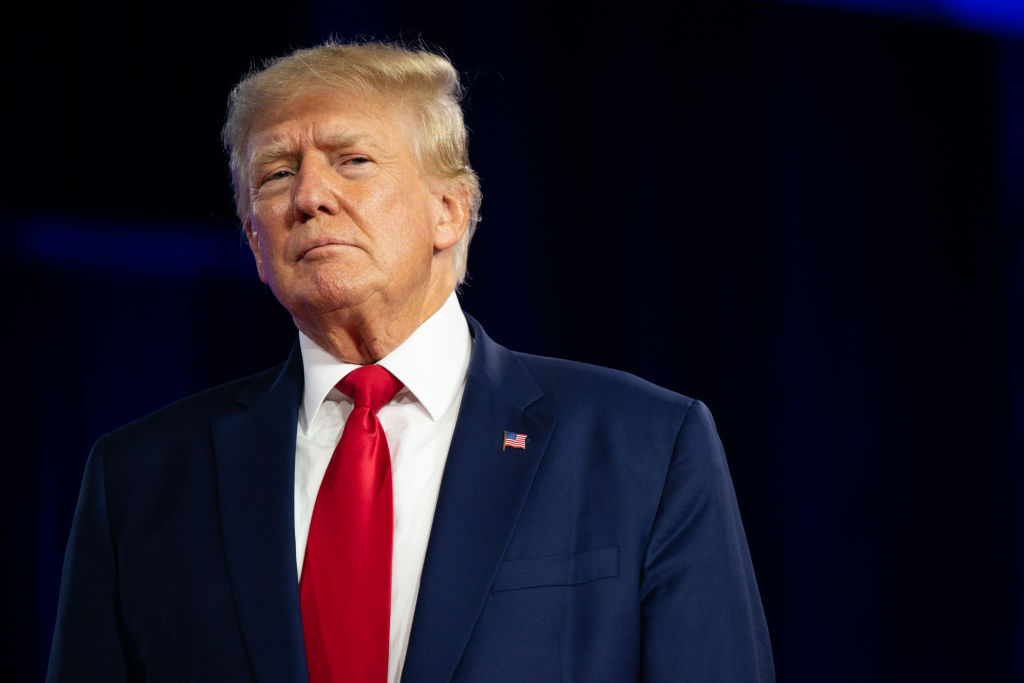'Lack of Self-Awareness': Former Trump Intel Official Slams CIA's New Book Chapter on Trump

The Central Intelligence Agency (CIA) recently released a critical account of what it was like to brief candidate and President-Elect Donald Trump, characterizing it as the most difficult transition since Richard Nixon.
But the document also showed how the Hillary Clinton and Democratic National Committee-funded dossier poisoned the relationship between Trump and the intelligence community (IC), making it more difficult. And it also showed that Trump was a serious and engaged consumer of intelligence during intelligence briefings.
The account was published earlier this week on the CIA’s website, and is part of a historical record produced by the CIA on briefing candidates and presidents-elect. The chapter on Trump — titled “Chapter 9: Donald J. Trump — A Unique Challenge” — is the latest update to the book, which is authored by retired career intelligence officer John L. Helgerson.
The chapter’s summary stated:
The IC’s analysis and collection activities were caught up in partisan political disputes during the campaign, the transition, and after Trump took office. In this awkward atmosphere, Trump nevertheless received 40- to 60-minute intelligence briefings from IC personnel roughly twice a week throughout his transition and in the weeks following his inauguration. While most new presidents received daily briefings, few devoted this much time to a given briefing, and some elected to receive the briefings not from the IC but from the national security advisor, or simply to read intelligence reports on their own. Trump had his own way of receiving intelligence information—and a uniquely rough way of dealing publicly with the IC—but it was a system in which he digested the key points offered by the briefers, asked questions, engaged in discussion, made his own priority interests known, and used the information as a basis for discussions with his policy advisers.
Looking back at the Trump transition, one must conclude that the IC achieved only limited success with what had always been its two fundamental goals with the briefing process: to assist the president-elect in becoming familiar with foreign developments and threats affecting US interests with which he would have to deal once in office; and to establish a relationship with the new president and his team in which they understood how they could draw on the Intelligence Community to assist them in discharging their responsibilities. The system worked, but it struggled.
Cliff Sims, a former senior intelligence official under the Trump administration, blasted the CIA and called the document “inappropriate” in a tweet thread.
“CIA just put out a doc, “Trump—A Unique Challenge,” that is inappropriate & contributes to the perception (& at times reality) that elements of the IC are partisan attack dogs against Trump/GOP. Even some current Intel officials are privately characterizing the doc as a hit job,” he tweeted.
CIA just put out a doc, “Trump—A Unique Challenge,” that is inappropriate & contributes to the perception (& at times reality) that elements of the IC are partisan attack dogs against Trump/GOP. Even some current Intel officials are privately characterizing the doc as a hit job
— Cliff Sims (@Cliff_Sims) December 1, 2021
Helgerson called the most “problematic aspect” of the 2016 transition and subsequent presidency for the intelligence community the “emergence of the Trump team’s contacts with Russian officials as a domestic political issue in the United States.”
“The intelligence agencies were drawn into political quagmires initiated by others that were, nevertheless, important for the Community because they badly strained its relationship with the new president and his party,” he wrote.
Sims slammed the IC for its “lack of self-awareness.”
“Publishing this shows either a profound lack of self-awareness by IC leaders or a wanton disregard for the impact of public trust on their ability to perform their mission,” he tweeted. “The IC has real issues with internal politics & a big PR problem with a large chunk of the American people.”
Publishing this shows either a profound lack of self-awareness by IC leaders or a wanton disregard for the impact of public trust on their ability to perform their mission.
The IC has real issues with internal politics & a big PR problem with a large chunk of the American people
— Cliff Sims (@Cliff_Sims) December 1, 2021
Allegations that Trump and his campaign had colluded with Russia during the 2016 election arose from a flimsy piece of opposition research known as the “dossier.”
The dossier originated from opposition research conducted by Fusion GPS and funded by Republican billionaire Paul Singer, but after Trump became the presumptive GOP presidential nominee in early 2016, that research was then passed off to the Hillary Clinton campaign. The Clinton campaign and the Democratic National Committee then paid Fusion GPS to continue the research, focusing on digging up any ties Trump had to Russia. Fusion GPS hired Christopher Steele, a former British spy who had worked with the FBI, to put together the dossier. The dossier falsely alleged Trump campaign was engaged in a years-long conspiracy to collude with Russia to win the election, and contained the outlandish claim that Trump had paid prostitutes in Moscow to urinate on a bed in a hotel room once used by Barrack and Michelle Obama.
Nonetheless, Steele funneled the dossier to the FBI and DOJ through contacts such as then-DOJ official Bruce Ohr. Fusion GPS also paid Ohr’s wife, Nellie Ohr, as a researcher. Fusion GPS also pushed the document to State Department officials, members of Congress, and multiple establishment media journalists. The FBI opened an investigation against the Trump campaign in the summer of 2016, and reportedly used the dossier as a “roadmap” to investigate the Trump campaign and also to obtain a secret surveillance warrant against Carter Page, a Trump campaign adviser.
The IC then briefed the dossier to President-Elect Trump and that briefing was then leaked to CNN, which prompted Buzzfeed to publish the dossier. The publishing of the dossier fueled public accusations that the Trump campaign had colluded with Russia and demands for an investigation. The FBI disclosed its investigation in early 2017, and after Trump fired then-FBI Director James Comey, the FBI launched a special counsel investigation led by Robert Mueller. Mueller’s investigation found there was no collusion. Mueller’s summary of his investigation said, “The investigation did not establish that members of the Trump Campaign conspired or coordinated with the Russian government in its election interference activities.”
Despite factual evidence Clinton and the DNC paid Fusion GPS and Steele for the dossier, Helgerson wrote the dossier was created by Steele “allegedly at the behest of his political opponents.” And despite the dossier being completely discredited and debunked following indictments by Special Counsel John Durham, Helgerson wrote that the dossier “according to the press, related in large part to [Trump’s] actions in and with Russia.”
Helgerson wrote that the leaking of the IC briefing to Trump on the dossier “embroiled” the IC and that the next time Trump received a routine intelligence brief by CIA career analyst Ted Gistaro, he “vented for 10 minutes about how we [the IC] were out to destroy him.” Helgerson wrote that Ted Gistargo, the career CIA analyst assigned to brief Trump during the campaign and transition, said he did not believe Trump ever accepted IC disavowals of responsibility for the dossier.
Helgerson wrote that Trump had tweeted, “Intelligence agencies should never have allowed this fake news to ‘leak’ into the public. One last shot at me. Are we living in Nazi Germany?” and a few days later, he asked on Twitter if then-CIA Director John Brennan was the “leaker of Fake News?”
Helgerson wrote:
This apparently was then last straw for Brennan. Brennan’s frustration clearly had been building for some time. Earlier in the transition, in an interview with the British Broadcasting Corporation (BBC), he had warned the president-elect publicly that his announced intent to tear up the Iran nuclear deal would be the ‘height of folly’ and ‘disastrous.’
Helgerson said, however, that Brennan’s “foray into public policy advocacy” did not sit well with Trump and that “even the director’s supporters in the Agency found it perplexing.”
Helgerson also wrote that former DNI James Clapper also disparaged Trump, saying he was “prone to ‘fly off on tangents’” and there might be “eight or nine minutes of real intelligence in an hour’s discussion.” Clapper also called Trump “fact-free” and said “evidence doesn’t cut it with him.” Clapper and Gistaro both said that Trump did not read much, but preferred key points and updates from the last briefing.
However, Gistaro said Trump in his first briefing as president-elect was “engaged, attentive, and appreciative” and as president, Trump took his presidential daily briefings “seriously.” He had an average of 2.5 sessions per week, with each briefing lasting 40 to 60 minutes. And Trump on some occasions praised the IC and thanked them for their service to the nation.
Helgerson said the Middle East was the region most discussed during the transition briefings, but the single country that occasioned the most discussion with Trump was China.
In his critique, Sims noted that the IC’s career analytic ombudsman found that intelligence analysts were reluctant to have their analysis on China brought forward because they tend to disagree with the Trump administration’s policies.
DNI @JohnRatcliffe accurately articulated some of the IC’s politicization issues, based on the ombudsman’s findings and his (our) personal experience, in a brief but impactful letter to Congress that can be read here: https://t.co/ROu5rdE7e7
— Cliff Sims (@Cliff_Sims) December 1, 2021
“The IC is in need of some enterprise-wide self-reflection and a dose of humility. And IC leaders need to develop sober, unbiased, unshaded analyses about not only the threats facing the country, but also the IC’s own mistakes, problems & shortcomings. US NatSec depends on it,” Sims concluded his tweet thread, which can be found here.
Follow Breitbart News’s Kristina Wong on Twitter or on Facebook.
" Conservative News Daily does not always share or support the views and opinions expressed here; they are just those of the writer."




